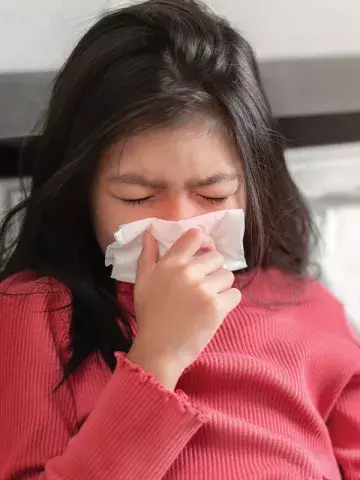Childhood respiratory illnesses, asthma and allergies linked with chronic rhinosinusitis in middle age
By Dr Emily Lathlean MB BS, FRACGP
Children with asthma, frequent head colds and tonsillitis are more susceptible to chronic rhinosinusitis (CRS) in middle age, researchers have found.
The prospective cohort study, published in Allergy, used data from the population-based Tasmanian Longitudinal Health Study cohort; participants aged 6 to 7 years in 1968 were serially followed into middle age. In middle age, about 6% of the 3609 participants reported current CRS symptoms, with nearly half of these having doctor-diagnosed disease.
Early-life exposures that were significantly associated with CRS in middle age included frequent head colds, frequent tonsillitis and current childhood asthma, with a 2.23-fold and 2.04-fold increase in the odds for symptomatic doctor-diagnosed CRS in middle age for current childhood asthma and frequent childhood head colds, respectively.
Participants with symptomatic CRS or a past diagnosis of CRS were also less likely to be currently employed or in full-time employment in middle age.
Dr Jennifer Perret, lead author of the study, said the findings strengthen the concept that adult respiratory disease can originate in childhood, and highlight the potential for earlier opportunities to intervene and minimise disease in later life.
‘This is important because the symptoms of CRS can significantly reduce the work productivity and quality of life of those affected,’ said Dr Perret, who is a physician-trained Respiratory and Sleep Epidemiologist at the University of Melbourne’s Allergy and Lung Health Unit in Melbourne and NHMRC Research Fellow.
‘We also confirmed that the link between allergic asthma and CRS in the middle-aged adults was strong in our study population. This finding can in part explain why the newer biological type II-anti-inflammatory therapies have been found to be especially effective in people who suffer from both conditions.’
There were also trends of increasing atopic sensitisation to Dermatophagoides pteronyssinus (house dust mite), peanut and cow’s milk among participants with CRS in middle age.
Unexpectedly, a modest reduction in the odds for a past diagnosis of sinusitis among participants with childhood pneumonia and/or pleurisy was also found; researchers said further studies were needed to clarify this finding.
Dr Perret recommended that doctors managing children with frequent head colds or recurrent tonsillitis ensured that these patients were up to date with all currently available vaccinations against respiratory infections, and considered prescribing antibiotics earlier and more often, as this may lessen a child’s future risk of CRS from bacterial infections of the upper airway.
Dr Perret also suggested evaluating middle-aged patients with CRS for the presence of concurrent asthma and allergies to enable treatment of these conditions as well.


